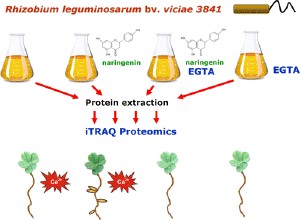Summary
 Since the discovery and development of proteome, methods used in quantifying proteomics has been constantly improving. The most common methods of quantifying proteomics are including DIGE (difference gel electrophoresis), iCAT (Isotope-coded affinity tag) and SILAC(Stable Isotope Labeling with Amino Acids in Cell Cultures). In 2004, iTRAQ (isobaric tags for relative and absolute quantitation) was developed by Applied Biosystems Incorporation---ABI. After that, iCAT and iTRAQ became the most powerful approaches in this aspect. This post mainly focuses on introducing iTRAQ.
Since the discovery and development of proteome, methods used in quantifying proteomics has been constantly improving. The most common methods of quantifying proteomics are including DIGE (difference gel electrophoresis), iCAT (Isotope-coded affinity tag) and SILAC(Stable Isotope Labeling with Amino Acids in Cell Cultures). In 2004, iTRAQ (isobaric tags for relative and absolute quantitation) was developed by Applied Biosystems Incorporation---ABI. After that, iCAT and iTRAQ became the most powerful approaches in this aspect. This post mainly focuses on introducing iTRAQ.
Technical introduction
iTRAQ, a new and powerful method of protein quantification, is relying on the iTRAQ reagent. This approach can work on absolute and relative quantitative research of four protein samples at the same time.
In fact, iTRAQ is an isotopically labeled reagent with a charged reporter group, a peptide reactive group and a balance group. A charged reporter group contains four kinds of relative molecular mass---114, 115, 116 and 117. And a balance group also has four relative molecular mass---31, 30, 29 and 28. After the combination of a balance group and a report group, the total relative molecular weight of iTRAQ reagent should be maintained at 145. Peptide reactive group combine with N-terminus on peptides and reactive e-amino groups on Lysine in order to mark all peptide fragments in samples and increase the coverage of peptide segments, as well as remain the important structural information of proteins after post-modificational modification.
Technical features
This technology's features are lying in following aspects:
1.iTRAQ allows a wide range of separation and analysis.
2.The results of quantitative analysis are reliable. It can give molecular weight and a wealth of structural information for each component.
3.MS with high sensitivity and low detection limits.
4.It can save a lot of time in separation and has good separation results.
5.This technology has a high degree of automation.
6.Cytoplasmic proteins, as well as membrane proteins, nuclear proteins, extracellular proteins can be detected by using iTRAQ. iTRAQ can detect low-abundance proteins, alkaline proteins, as well as proteins less than 10 Kda or greater than 200 Kda.
Related service:
iTRAQ-based Proteomics Analysis